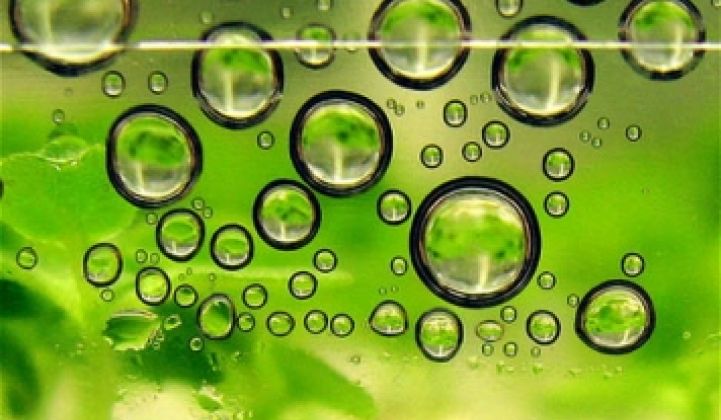I want to believe that algae can make a significant contribution to our liquid fuels habit in the coming years. But wildly optimistic predictions based on scant evidence and stretched data are disingenuous and do a disservice to the entire industry.
Jim Lane of Biofuels Digest recently authored a forecast projecting that algal biofuels capacity will reach 1 billion gallons by 2014. That would be up from what is essentially, let me check, yes, zero algal biofuels capacity today. Biofuels Digest based its analysis on price and capacity projections for 2009 to 2014 from "leading companies in the field." I am assuming that these price and capacity projections are based on little more than press releases and interviews from the likes of PetroAlgae, Solazyme, PetroSun, Solix, Sapphire and Algenol. Some truth in those press releases and more than a little embellishment.
Here are the details of the forecast:
Algal Fuel/Capacity projections, 2009 to 2014
Look at this chart a bit more carefully. From 2009 to 2010, capacity goes from 1Mgy to 41Mgy. That's a pretty irresponsible number to forecast if you can't supply the disruptive force that makes capacity grow by more than 4,000 per cent.
Capacity then triples and slows down to a mere 100 percent growth for a few years. That reasoning would be based on believing the forecasted capacity increases of less-than-transparent OTC bulletin board firms and start-ups with no volume experience or sufficient cash to make that happen.
Further magic from the chart slashes the price by 25 percent for a few years and then the price drop accelerates in 2012 to about 60 percent. In what alternative universe do markets behave like this?
More questionable forecasting methodology from Lane in this sentence: "Costs are based on the lowest cost provider – not an average for all providers." Does that make any kind of sense to base your forecast on the lowest fantasy price forecast?
More twisted logic follows. I can barely understand these non-sequitors: “The $9–$30 cost ranges cited in the latest research reflect today’s prices,” said Biofuels Digest editor Jim Lane. “That’s already competitive in some nutraceutical and food markets – for example, a pound of olive oil retails for around $17 at my store, or about $120 per gallon. But like the computer market – costs are expected to come down quickly.” I think this means that I will soon be able to buy olive oil at $1.20 per gallon.
More disinformation and misinformation follow: "33 percent of 2014 capacity is projected to use a closed system, photobioreactor (PBR) process, with 67 percent using open pond “raceway” systems." In 2012, 22 percent of projected capacity would utilize the closed PBR process, and 78 percent would utilize open ponds." These wildly innaccurate forecasts fly in the face of any research from smart algae people at NREL or our favorite algae realist – Dr. John Benemann. The abject failure and shuttering of GreenFuels also does not support any hope for PBRs as a cost-effective solution. PBRs are not cost effective, yet Lane predicts more than 300 million gallons of biofuel derived for PBRs. No way. Dr. Benemann flatly states that PBRs "do not work” and are useful only in supplying inoculum.
Jim – I'm in the forecasting business myself. If I was going to make claims for 1,000X growth in production and a 10X cost reduction in five years I would have to back it up with good reasoning. And I'm not seeing a lot of that in your claims.
Jim Lane's online bio here.
Greentech Media has a brief report on algae players and challenges available here. We tried to stick to a reality-based style of analysis. I've asked Mr. Lane for a comment on my critique and will publish his reponse if it comes.



